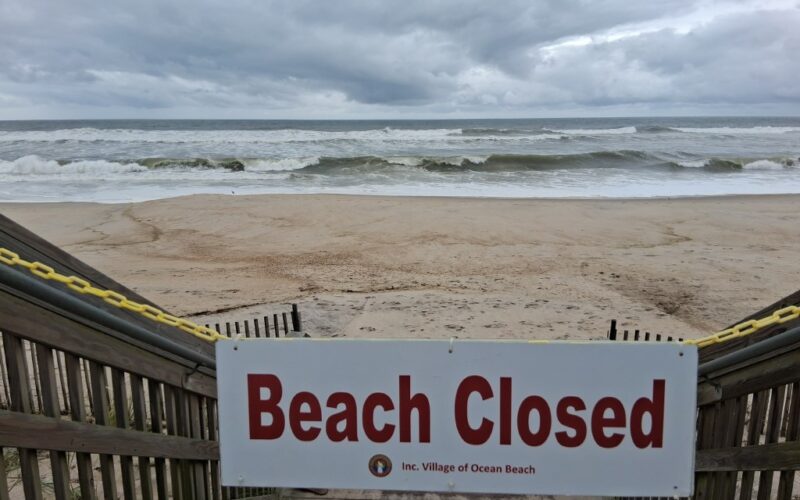With summer drawing quickly to a close, beach lovers have been warned away from the waters as Hurricane Erin churns through the Atlantic, bringing with it the threat of coastal flooding for parts of New Jersey and Long Island.
While the massive storm is forecast to remain hundreds of miles from shore, its outer bands will still likely be strong enough to stir up ferocious riptides, monster swells and intense winds of 100 mph along much of the East Coast. According to the National Weather Service, conditions will deteriorate as the week progresses and will likely peak in severity on Thursday and into Friday.
Erin, the first major hurricane of the 2025 Atlantic hurricane season, rapidly intensified over the weekend, exploding in just a few hours from a Category 1 hurricane to a catastrophic Category 5 storm with wind speeds of 160 mph. It has since downgraded to a Category 2 storm, but it remains a large hurricane with winds extending outward up to 90 miles from the center and tropical-storm-force winds extending outward up to 265 miles.
And it is only expected to grow in size as the week progresses, before it eventually turns back out to sea. It is expected to make its closest pass along the coast on Thursday, when the threat of coastal flooding will be at its peak.
“Moderate coastal flooding at high tide is expected Thursday and Friday farther north into coastal Delaware and New Jersey,” according to The Weather Channel meteorologists, who noted water levels will “gradually recede this weekend.”
As of early Wednesday afternoon, the storm’s center was was located roughly 545 miles west-southwest of Bermuda and 365 miles south-southeast of Cape Hatteras in North Carolina, where residents are already beginning to feel its effects, the National Hurricane Center said its latest update.
A state of emergency has been declared for the entire state given the storm’s maximum sustained winds of 110 mph.
“Weather conditions (are) expected to deteriorate along the coast of North Carolina by this evening,” the hurricane center said. “Beachgoers are cautioned against swimming at most U.S. East Coast beaches due to life-threatening rip currents.”
Other states, including New York and New Jersey, have ordered people to avoid the ocean entirely as North Carolina confirmed several water rescues have already been prompted by the treacherous rip current.
“We are hyper, hyper concerned, first and foremost about complacency, particularly when the weather is really good Thursday afternoon through Sunday, in terms of people sort of thinking about going in the water because these rip currents are brutal,” New Jersey Gov. Phil Murphy said at a news conference Tuesday. “Please, don’t go into the water.”
New York Gov. Kathy Hochul has also prohibited swimming at beaches across the state, including those in Long Island.
With News Wire Services
Originally Published:








